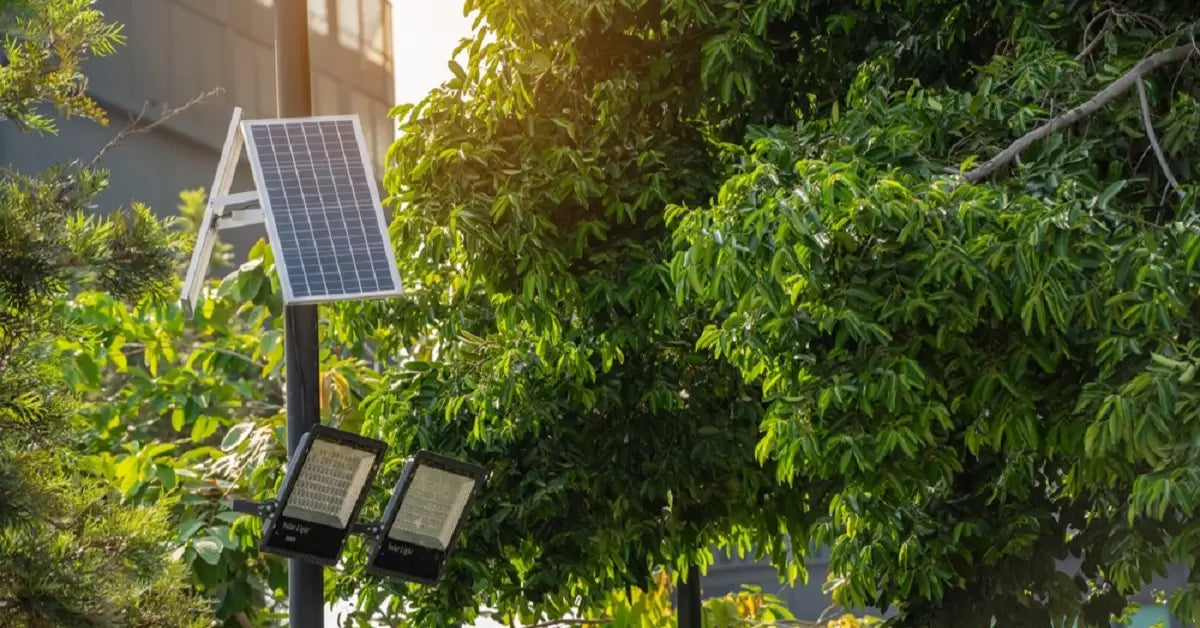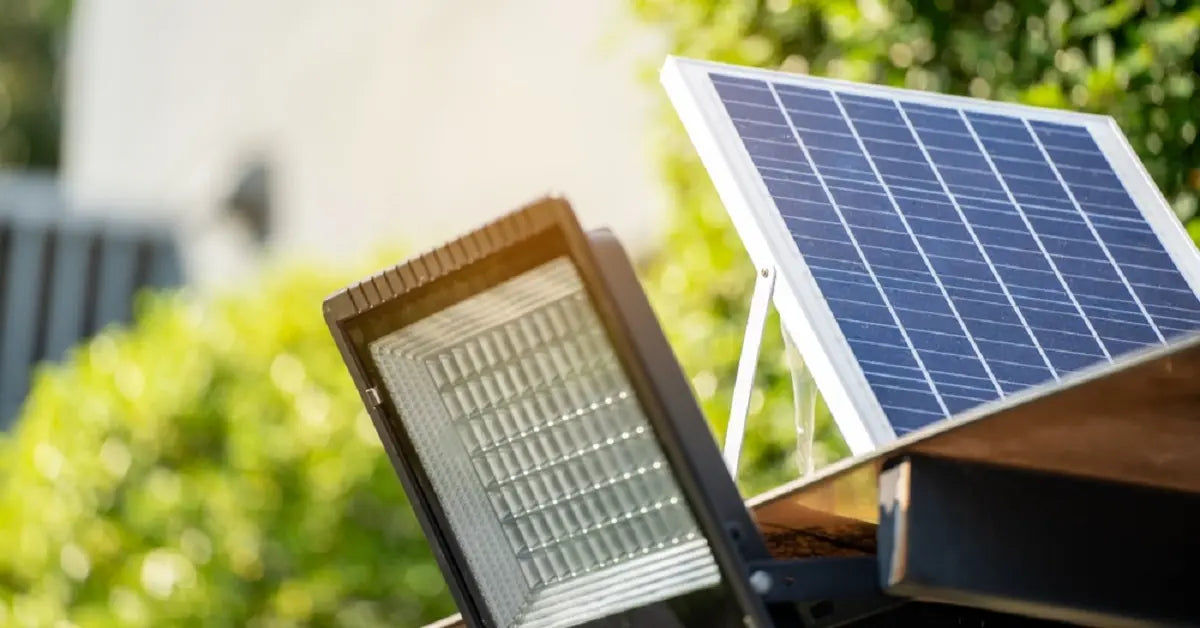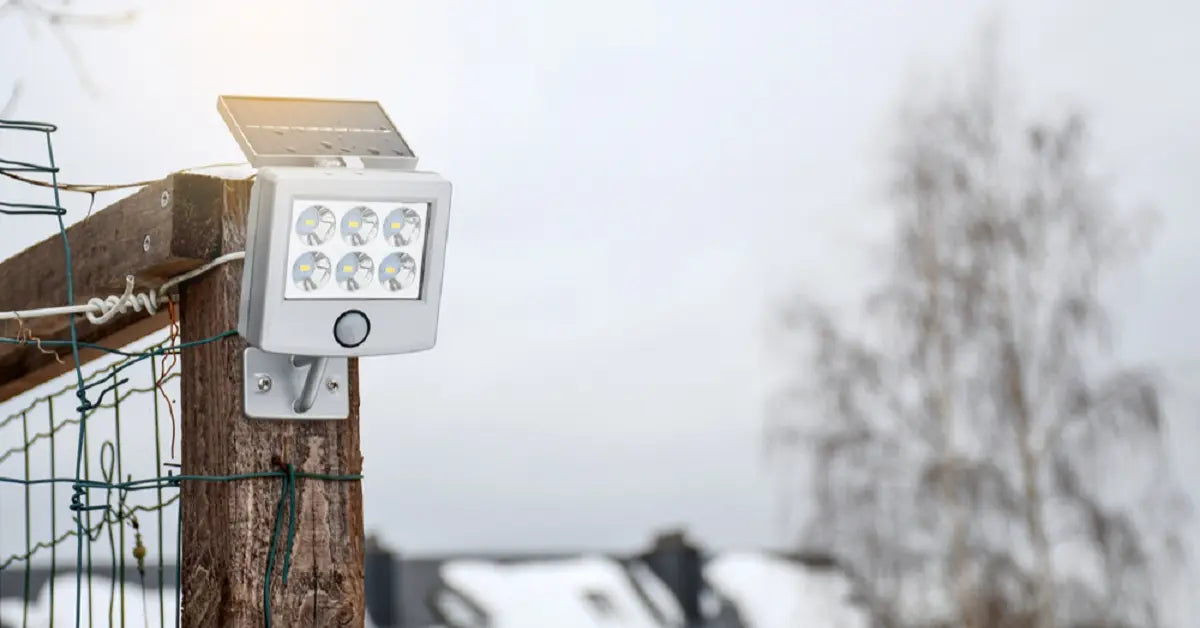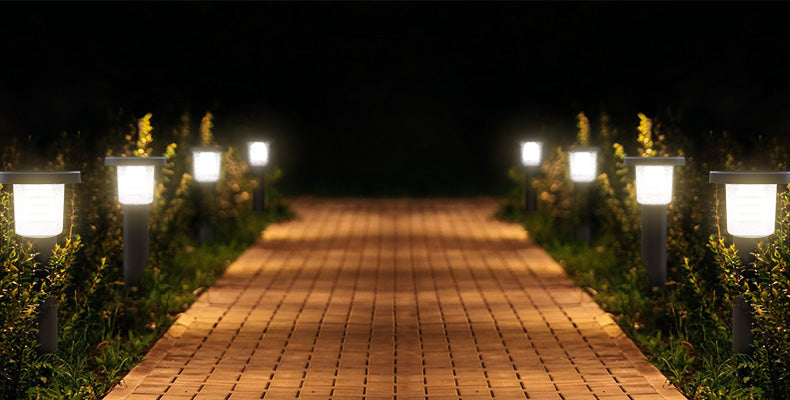I've spent years testing solar lighting systems. The most common question I hear is always the same: "How long will they actually stay on?"
It's a fair question. Nobody wants outdoor lighting that dies halfway through the night.
Let me give you the complete answer—not just the marketing version, but the real engineering truth.
The Short Answer: How Many Hours Do Solar Lights Really Last?

Most solar lights operate between 6 to 12 hours on a full charge. That's your baseline expectation.
Here's what really matters: this range exists because of a simple equation. Your solar light's run time depends on how much energy the panel captures during the day versus how much the LED draws at night.
The problem? Not all solar lights are created equal. Some barely make it past midnight, while others shine strong for 14 hours straight.
The 6 Key Factors That Affect Solar Light Run Time

1. Sunlight Exposure
Your solar panel needs direct sunlight—period. We're talking 4 to 10 hours of unobstructed exposure for a full charge.
Partial shade might seem harmless, but it cuts efficiency dramatically. Even a shadow from a tree branch can reduce charging by 40% or more.
2. Battery Quality and Capacity
This is where cheap lights fail you. A higher-capacity battery stores more energy, plain and simple.
But capacity isn't everything. Battery chemistry matters too.
Rechargeable batteries typically last 3-5 years before they start losing their ability to hold a charge. When that happens, your 10-hour light becomes a 4-hour light.
3. Seasonal Changes
Winter is brutal for solar performance. Shorter days mean less charging time.
Lower sun angles reduce panel efficiency. I've seen well-designed systems maintain 8-10 hours even in December.
Poorly designed ones? They struggle to hit 4 hours.
4. Placement and Orientation
Location is everything. Your panel should face the equator—south if you're in the Northern Hemisphere.
Buildings, fences, and landscaping all steal precious sunlight. Even a few degrees off optimal angle can cost you an hour of run time per night.
5. Maintenance
Here's a factor most people ignore: dirt. A layer of dust or pollen on your solar panel can reduce charging efficiency by 20-30%.
Wipe your panels clean monthly. It takes two minutes and dramatically improves performance.
6. Light and Circuitry Quality
High-quality circuitry converts stored electricity into light more efficiently. That means brighter output and longer run time from the same battery charge.
Cheap lights waste energy through poor circuit design. It's like having a gas tank with a leak—you're losing power before it ever reaches the LED.
Beyond the Basics: Pro-Level Details That Impact Performance

Now let's talk about the technical factors that separate professional systems from consumer products. This is where real performance gains happen.
Not All Panels Are Created Equal: Monocrystalline vs. Polycrystalline
I need you to understand this distinction. It directly impacts your run time.
Monocrystalline panels deliver 21-25% efficiency. Polycrystalline panels top out around 15-17%.
That efficiency gap becomes critical on cloudy days. A monocrystalline panel captures more energy during the same daylight hours.
It also performs better in diffused light conditions—like overcast skies or early morning sun. That extra energy storage translates directly to extended run time at night.
When you see a light advertising "charges even on cloudy days," check the panel type. If it's monocrystalline, that claim has merit.
The Unseen Enemy: How Heat Degrades Batteries and Reduces Run Time
This is the performance killer nobody talks about. Extreme heat is devastating to battery cells.
Every 10°C increase in operating temperature can cut battery lifespan in half. In practical terms, a battery that should last 5 years might fail in 2.5 years if it's consistently overheating.
Even before complete failure, heat reduces the battery's ability to hold a charge. That means shorter run times long before you realize there's a problem.
Professional systems are engineered with heat dissipation features. Ventilated housings, heat-resistant materials, and strategic component placement all keep internal temperatures manageable.
Consumer-grade lights often pack everything into sealed plastic housings with no thermal management. The battery cooks all summer, and by fall, your 10-hour light is down to 6 hours.
From Variable to Controllable: How to Guarantee All-Night Illumination
Everything I've explained so far is about understanding the variables. Now let's talk about control.
The key is starting with a system engineered to handle real-world conditions. Let me show you what that looks like.
Start with a Massive Energy Reserve: The 12,500mAh Advantage

Battery capacity is your foundation for reliable performance. To see how all these principles come together, consider a professional-grade solar street light like the Intelamp 3000LM.
It features a 12,500mAh battery—roughly triple the capacity of typical residential solar lights. This massive energy reserve changes everything.
Combined with a high-efficiency monocrystalline panel that fully charges in just 6 hours, you're looking at 12-14 hours of operation at 100% brightness. Even on cloudy days, the system maintains reliable all-night performance.
That's the difference between engineering and marketing. A large-capacity battery doesn't just extend run time—it provides a buffer against imperfect conditions.
Manage Your Power Intelligently with Remote Controls
Professional systems include remote controls with timers and dimming capabilities. This matters more than you might think.
You can strategically manage your power usage. Set the light to full brightness during high-traffic evening hours, then dim to 60% after midnight.
You've just extended your effective run time by hours while maintaining security illumination all night. You can also set precise operational schedules.
Need lights from dusk until 2 AM? Program it. Want motion-activated mode after 11 PM? This level of control means you're never wasting stored energy.
Beat the Heat with Superior Engineering
Remember that thermal degradation problem I mentioned? Professional systems solve it with heat-resistant design.
The Intelamp 3000LM features a heat-resistant white housing that actively reduces internal temperatures. This isn't decorative—it's functional engineering.
By keeping the battery and circuitry cooler, the system maintains consistent performance. It extends service life by years compared to conventional designs.
Explore Professional-Grade Outdoor Lighting
Understanding these factors changes how you evaluate solar lighting. You're no longer comparing lumens and run-time claims—you're assessing engineering quality.
Investing in quality engineering is the key to reliable performance. The principles remain the same: efficient solar capture, adequate battery capacity, intelligent power management, and thermal protection.
When you're ready to move beyond consumer-grade products, understanding these factors empowers you to make informed decisions. You can explore a collection of engineered solar outdoor lights designed for real-world reliability.
FAQs
How many hours do solar lights stay on?
Most solar lights stay on for 6 to 12 hours on a full charge. They typically run from dusk until dawn.
High-end models with adequate sunlight exposure can reach 14 hours. The actual duration depends on battery capacity, charging efficiency, and power management.
Professional-grade systems with large-capacity batteries and efficient monocrystalline panels consistently deliver all-night performance.
What is the downside of solar lights?
Performance depends entirely on sunlight exposure. Cloudy days and shaded locations reduce charging efficiency, which means shorter run times.
They're also not suitable for sustained high-output applications unless you invest in commercially designed systems. Batteries degrade over time and need replacement every 3-5 years.
Professional systems with thermal management last significantly longer.
Is it okay to leave solar lights on all night?
Yes, absolutely. Solar lights are designed to automatically switch on at dusk and off at dawn.
No manual operation is required. Letting them function as designed actually helps preserve battery life and maintain performance.
The charge controller manages the power flow to prevent over-discharge. There's no risk to leaving them on all night.
Why do my solar lights only last an hour?
A run time this short indicates a serious charging or battery issue. The most common causes are insufficient direct sunlight or dirt-covered solar panels.
Shade blocking the panel during peak charging hours is another culprit. Battery problems are also common.
Using the wrong replacement battery type can cause rapid discharge. Degraded solar cells that can no longer generate adequate charge will have the same effect.
Cold weather also reduces battery performance temporarily. Properly engineered systems account for this with larger capacity reserves.
Final Word from an Engineer
Solar lighting technology has matured significantly. The days of decorative lights that barely make it to midnight are over—if you choose wisely.
The difference between frustration and reliable performance comes down to understanding what drives solar light run time. It's not magic, and it's not luck.
It's engineering: efficient panels, adequate battery capacity, intelligent power management, and thermal protection. When you evaluate solar lights with these factors in mind, the right choice becomes clear.
Invest in quality engineering, and you'll enjoy years of reliable, all-night illumination.
You may like
How Long Do Solar Lights Last? Engineer's Guide to Durability (2025)
Do Solar Lights Work in Winter? Expert Guide to Year-Round Performance
How Do Solar Lights Work? The Ultimate Simple Step-by-Step Guide



